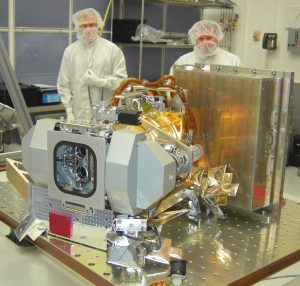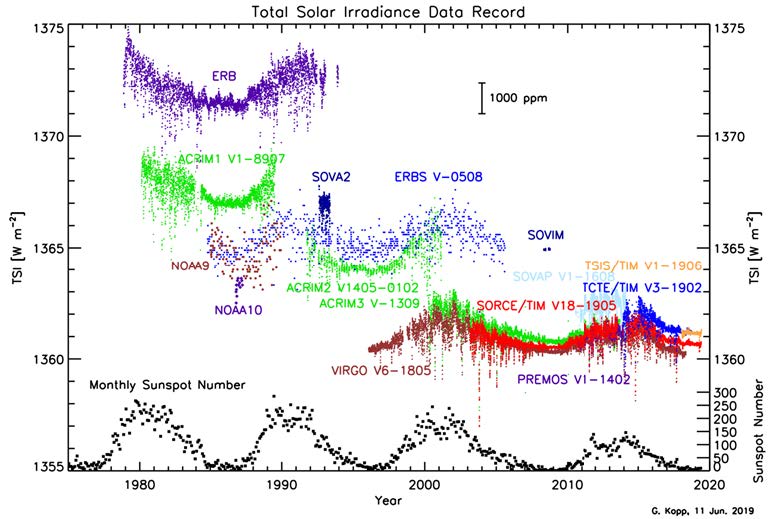TCTE Mission Ends
 As planned, the Total Solar Irradiance Calibration Transfer Experiment (TCTE) science mission ended on June 30, 2019. TCTE was built and operated by CU/LASP for NOAA under a NASA contract. TCTE launched aboard the U.S. Air Force Space Test Program Satellite-3 (STPSat-3) on Nov. 19, 2013 from NASA’s Wallops Flight Facility.
As planned, the Total Solar Irradiance Calibration Transfer Experiment (TCTE) science mission ended on June 30, 2019. TCTE was built and operated by CU/LASP for NOAA under a NASA contract. TCTE launched aboard the U.S. Air Force Space Test Program Satellite-3 (STPSat-3) on Nov. 19, 2013 from NASA’s Wallops Flight Facility.
To achieve the levels of stability needed for climate studies, the total solar irradiance (TSI) record relies on measurement continuity from stable, on-orbit instruments. In order to fill a potential gap in the 35+ year TSI climate record after the failed launch of the Glory mission in 2011 and the concerns regarding SORCE’s ability to continue operations due to battery degradation, the TCTE Total Irradiance Monitor (TIM) instrument was quickly readied for flight by refurbishing the SORCE’s ground-based TIM witness unit.
Although STPSat-3 was initially planned as a short technology-demonstration mission of only 18 months, NOAA extended the TCTE mission multiple times to provide the desired TSI-measurement overlap between the SORCE and the Total and Spectral Solar Irradiance Sensor 1 (TSIS-1). NASA assumed responsibility of continued STPSat-3 TCTE operations in 2017.
At the conclusion of the 2017 Earth Science Sr. Review the Earth Science Directorate (ESD) extended the TCTE mission to December 2018, with the goal of achieving a minimum of six months of overlap between TCTE and TSIS-1, which was launched and installed on the ISS in December 2017. The TCTE mission was subsequently extended to June 30, 2019, after which the Air Force cannot support continued TCTE operations due to other primary STPSat-3 technology-demonstration payload experiments.
TCTE was a successful mission: It assisted SORCE in maintaining measurement continuity of the now four-decade-long TSI climate data record and it helped confirm the lower TSI value established by the SORCE TIM (see Figure). The TSI climate record is now being continued via NASA’s TSIS-1 measurements from a newer TIM.
 Calibrated to much lower uncertainties than previous flight TSI instruments, the SORCE/TIM established a new, lower TSI value of 1360.8 W/m2 representative of solar minimum (Kopp & Lean, 2011). Subsequently-applied corrections to earlier instruments for scatter, which caused erroneously-high readings in those instruments, have lowered their values and greatly improved the agreement between all current TSI measurements.
Calibrated to much lower uncertainties than previous flight TSI instruments, the SORCE/TIM established a new, lower TSI value of 1360.8 W/m2 representative of solar minimum (Kopp & Lean, 2011). Subsequently-applied corrections to earlier instruments for scatter, which caused erroneously-high readings in those instruments, have lowered their values and greatly improved the agreement between all current TSI measurements.


